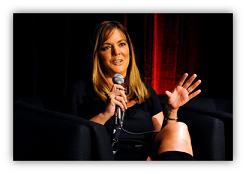
Last week, I wrote a pair of posts addressing digital opportunities for radio organizations. Each generated lots of comments – the written kind you see below at the end of each post, as well as on our socials. But given our presence at conferences and market visits, we get face-to-face feedback about various posts all the time from engaged broadcasters.
“How Radio Can Successfully Dive For Digital Dollars” listed four important boxes that contribute to success with non-OTR content. And “Fish Where The Digital Fish Are” which ran the next day, provided a pair of digital solutions we hope some of you consider.
But the one point where we heard the most feedback was under the umbrella of “Digitize Your Audience.” This has become a Paul Jacobs mantra, and for good reason. Your brand and organization can enjoy success in the digital realm, but if you’re coming away from that activity with only a fistful of dollars, you may be missing the big opportunity to glean key data from your users. And because you have to attract new listeners again and again, you’re not operating at scale and you’re starting from scratch with each round.
Oftentimes, content creators and marketers don’t take this into account. It’s akin to doing a lot of business, but never getting receipts. Someone can listen to – and LOVE – one of your podcasts, But if you don’t know who she is and how to connect with her after the fact , you may never get her back to try another item on your content menu.
, you may never get her back to try another item on your content menu.
Every piece of digital content you produce and platform you’re on is different. Some easily allow for these “receipts.” Others may be one and done. They listen but you never learn who they are, how to get them back, and how to monetize their time again and again.
This differentiation reminds me a lot of Lori Lewis‘ early days with Jacobs Media. Way back then (it was 2011), Lori knew her stuff – cold. And Paul and I simply peppered her with questions about the mysteries and vagaries of social media that started becoming clear(er).

One of the principles we talked about a lot revolved around radio sending the audience to social media, primarily Facebook. “Go to our Facebook page” became one of the most repeated phrases on the airwaves, especially as programming and talent struggled to update the station website. I remember conversations with station management questioning whether websites were even relevant in the social media ecosphere
And to that point, we started having discussions about the assets radio stations “rented” and the ones they “owned.” Facebook, Twitter, and other social spaces were in the “rented” category. “Landlords” like Mark Zuckerberg and Elon Musk can (and do) change the rules at their whim. Twitter (X) users have felt this big time during the past 11 months. Other “rentals” include YouTube, a place radio continues to send its precious listeners.
Fast-forward a decade and things haven’t changed much. While the “rent/own” question still begs to be asked, radio broadcasters are involved with digital initiatives with varying returns on investment. In many cases, stations are chasing downloads and page views – both important pursuits that generate digital dollars. But in these cases and so many others, broadcasters aren’t getting those all important “receipts” – email addresses from the consumers who sample this content.
cases, stations are chasing downloads and page views – both important pursuits that generate digital dollars. But in these cases and so many others, broadcasters aren’t getting those all important “receipts” – email addresses from the consumers who sample this content.
For too long, radio has blindly accepted “dumb data” from Nielsen. All we know is when people listen and for how long. Outside of their gender, their ethnicity (sort of), and their age, these people are anonymous. It’s frustratingly incomplete.
Yet, so often, stations engage in “random acts of digital” – doing what’s right in front of them with no thought given being able to reconnect with these people after the encounter.
It’s about “digitizing” the audience, a fancy way to account for and measure them. This can be accomplished in myriad ways: signing up for your member benefits database, subscribing to a piece of content (newsletter, concert calendar, a game, access to something of value), registering for a contest, or as admission to an event.
 The email database may be the least “sexy’ tool in the kit, but it may carry the most value. Once you have it, you can learn more about these people via short surveys, offer them special incentives to listen, market them to sales (without going overboard), and encourage them to tune into your other programming features.
The email database may be the least “sexy’ tool in the kit, but it may carry the most value. Once you have it, you can learn more about these people via short surveys, offer them special incentives to listen, market them to sales (without going overboard), and encourage them to tune into your other programming features.
Of course, in public and Christian radio, they are also the pipeline to more donations, the Holy Grail of these formats.
But if you don’t “digitize” these folks, you lose the opportunity to monetize them. And engage them. And track them. And re-engage them.
If you committed to a strategic plan to grow your database, and you stuck with it, it could function for you like the “new Nielsen.” You control the size of the database, and to a great degree, the actions of its members. With tens of thousands of them under your roof, present and accounted for, you’ve got yourself a big-time marketing opportunity. And it’s a lot cheaper to run this operation than it is to buy your ratings and share them with scores of stations in your market, and all those agencies who use them to jam you on rates.
You can even digitize “non-listeners.” They may not tune in your morning show, but if they consume other content you create- a concert calendar, a local newsletter, a game you create, an entertainment guide app, a news app – you’ve got them.
Ultimately, you would even determine the answer to a question that Bryan Biniak, CEO of Connected Travel, posed to Paul and me several years ago during a meeting at the NAB. It’s a question not a single person in radio can answer. And in the world of media and marketing, it’s an important one:
What is the value of a listener? 
In tech world, the CEOs of Uber, Spotify, TikTok, and even that small startup in your building can all precisely answer it. In radio, it remains a mystery.
Making it a goal to digitize your audience is a great starting point.
You bring it life by collecting receipts, a matter of applying strategic discipline to your digital plan.
Keep it up and you become an “owner.” And the amount of real estate you own is up to you.
Just hold onto the receipts.
- Media And Technology In 2025: Believe It Or Not! - April 18, 2025
- In Radio, You Just Never Know - April 17, 2025
- The Secret To Making A Great Podcast (And Great Radio) - April 16, 2025




Leave a Reply